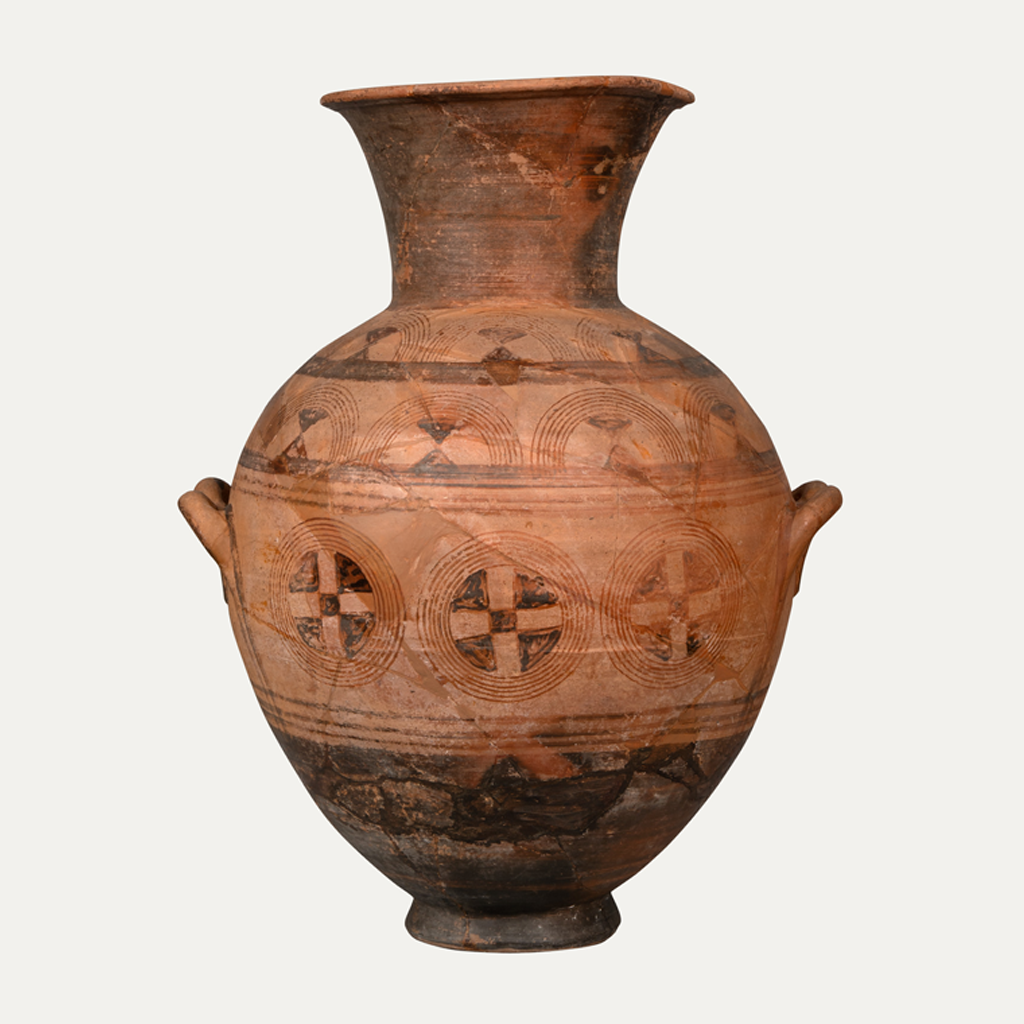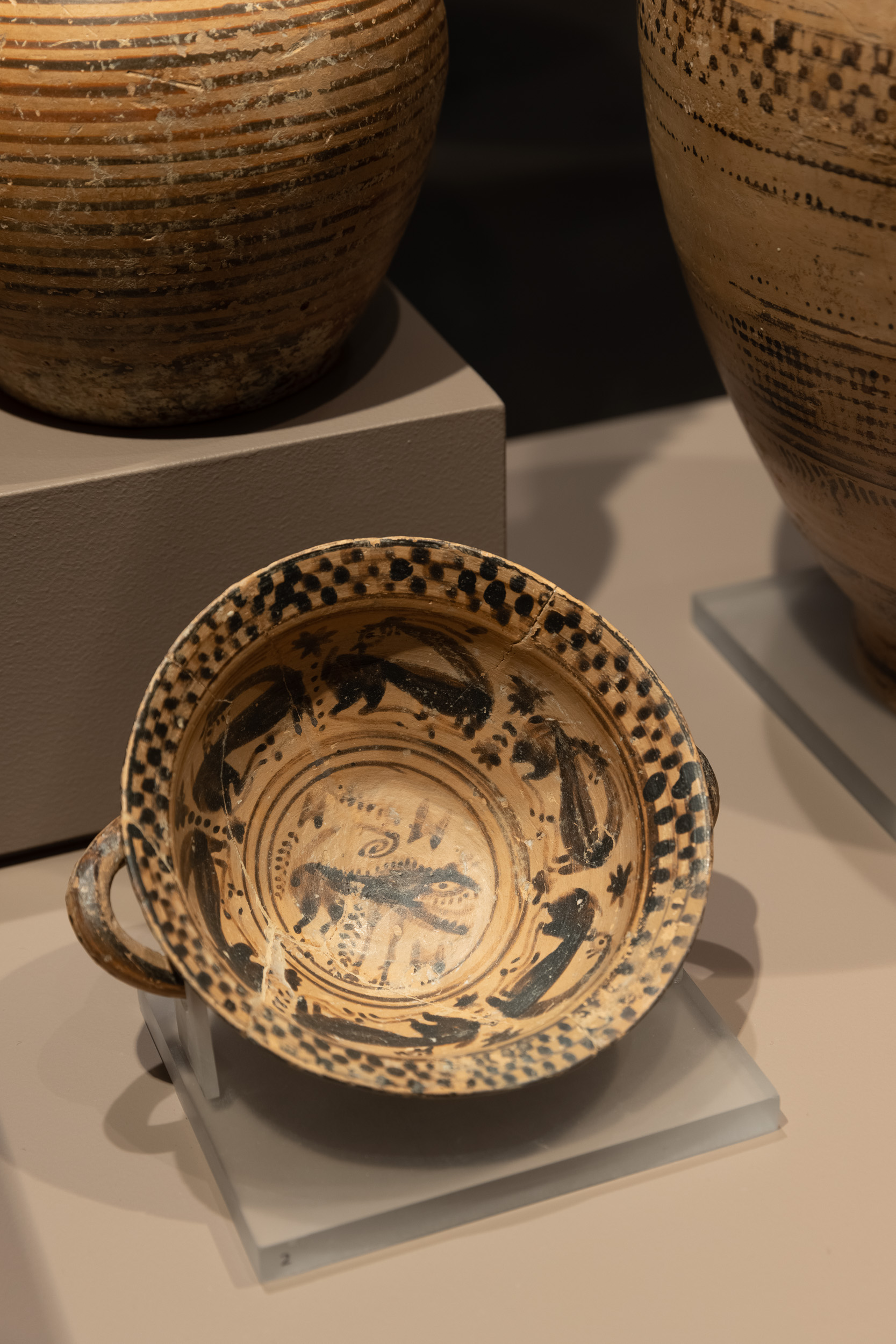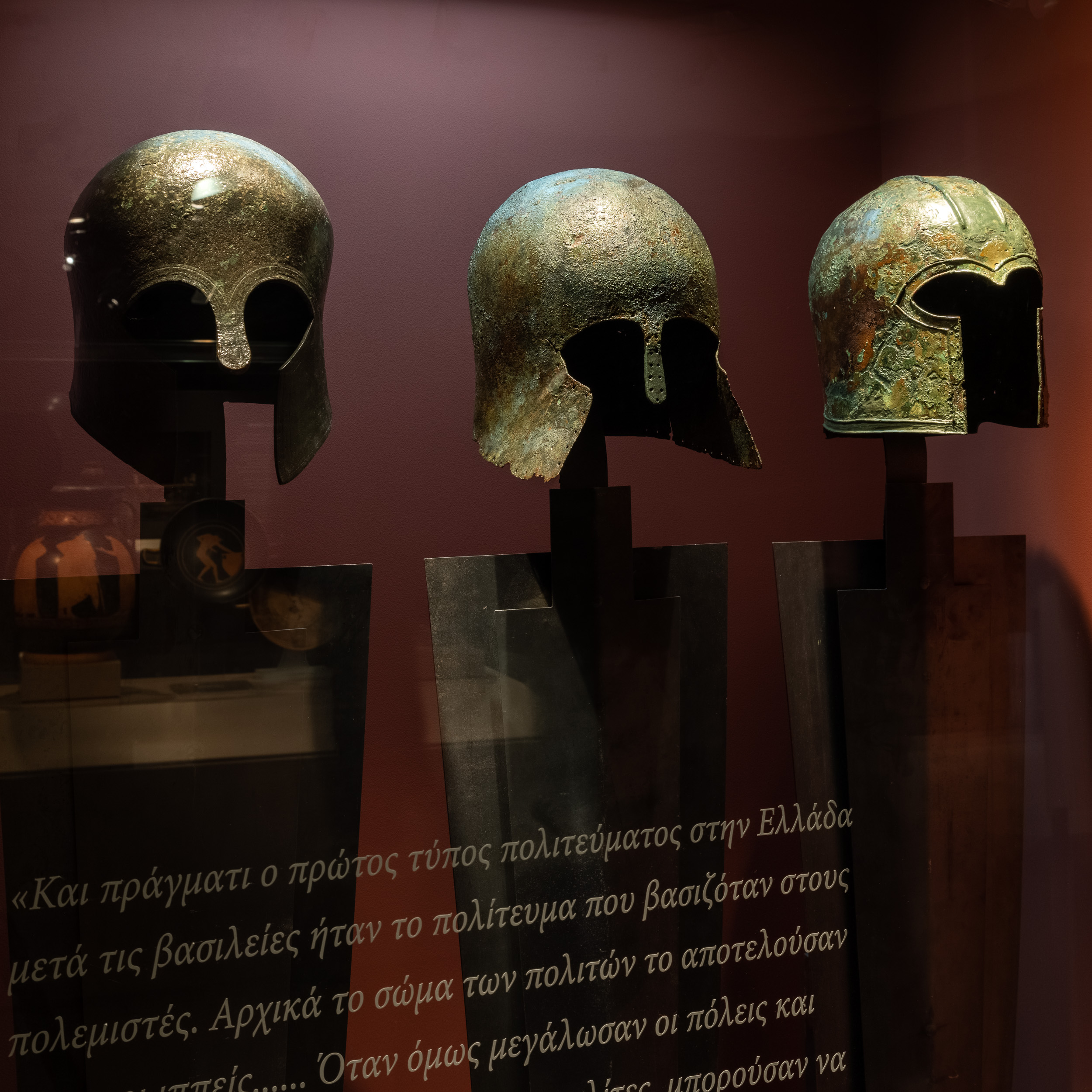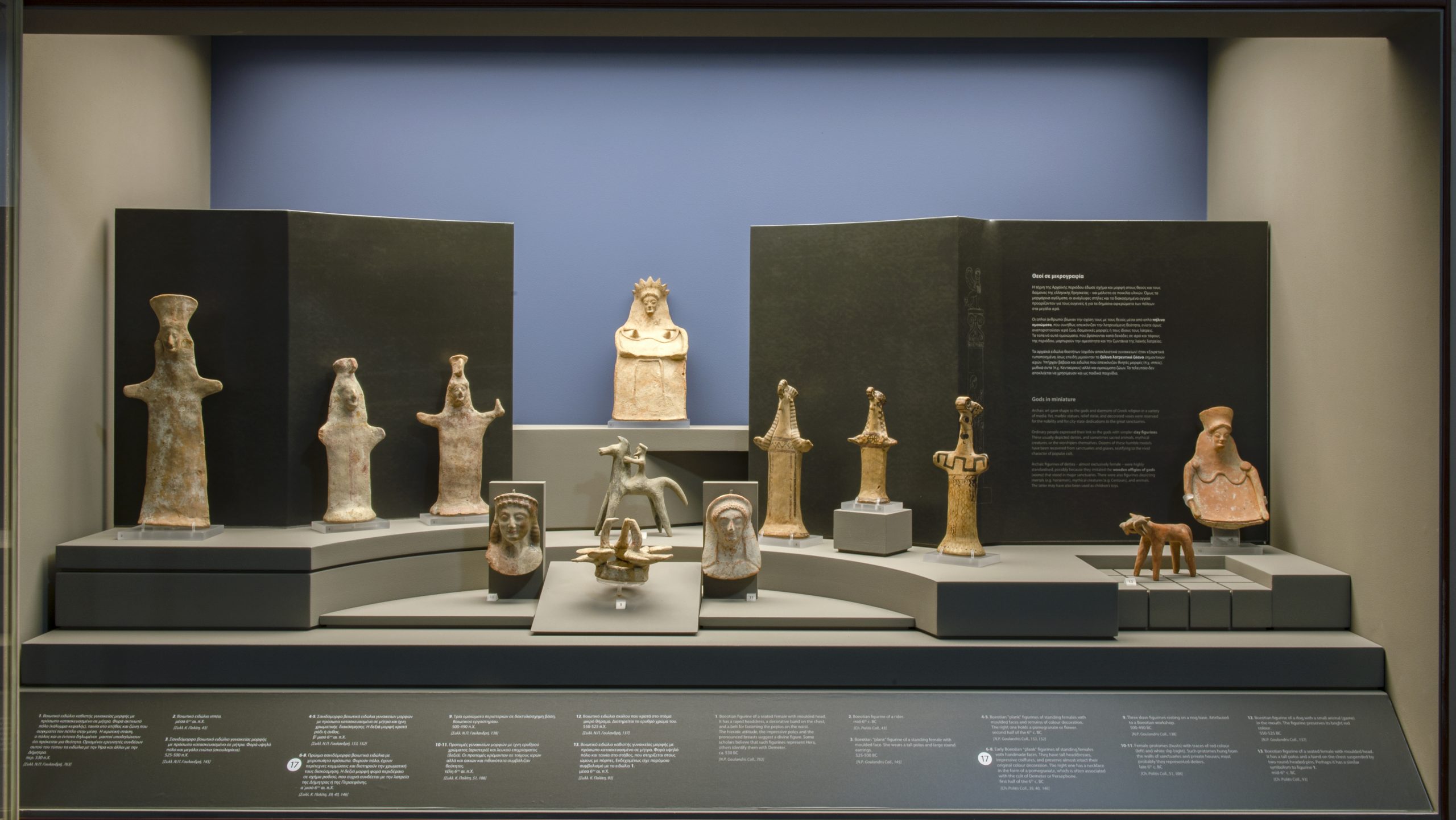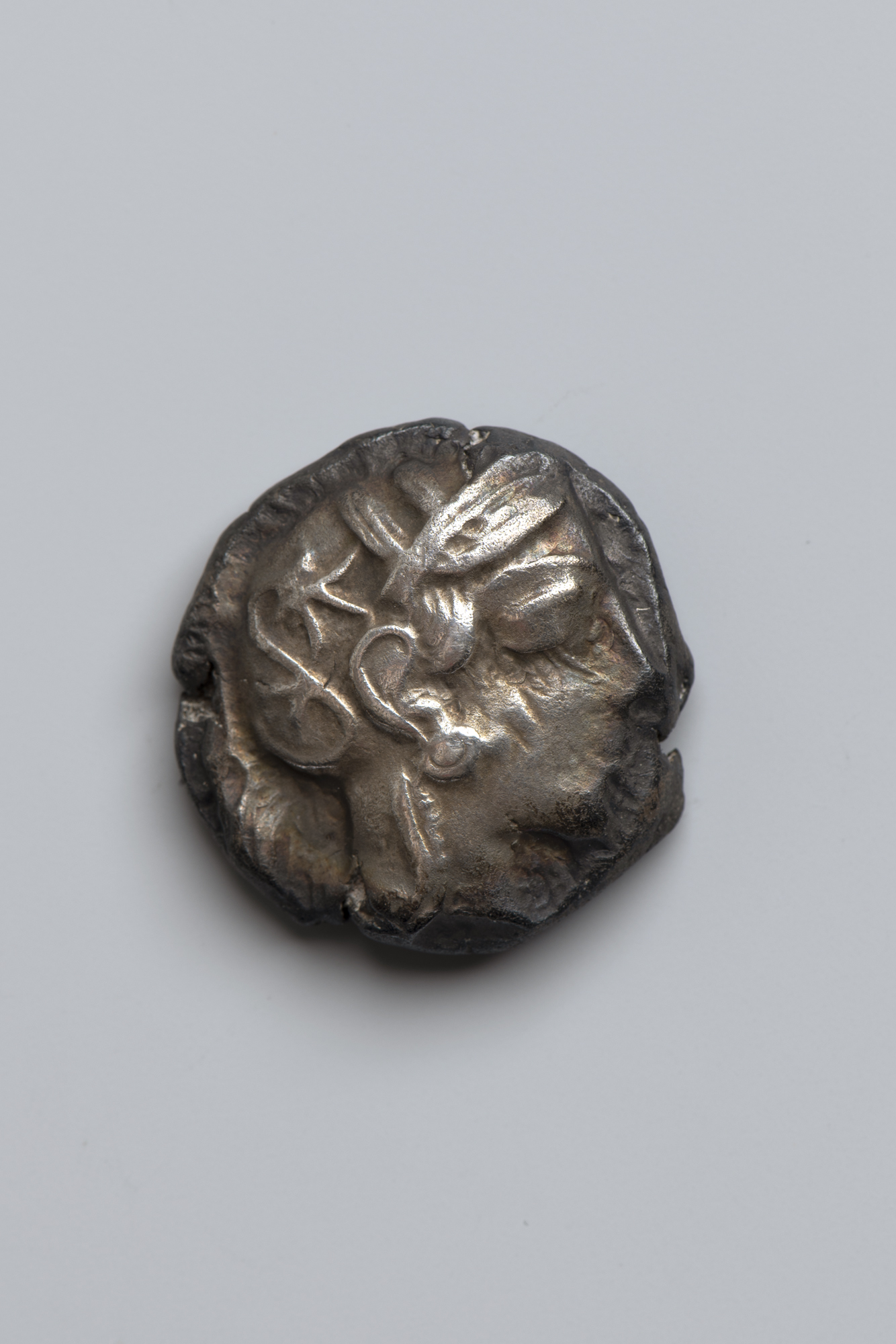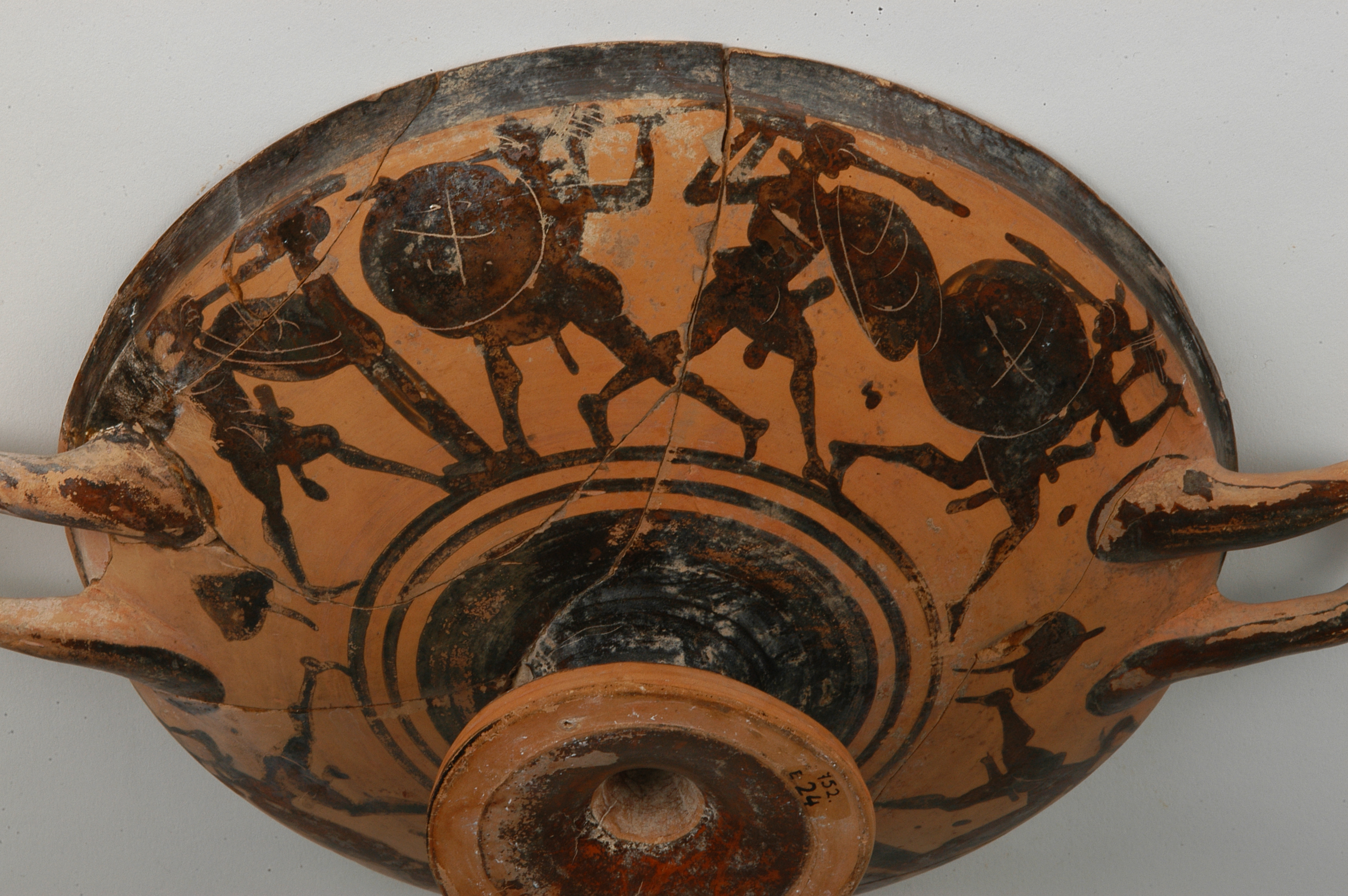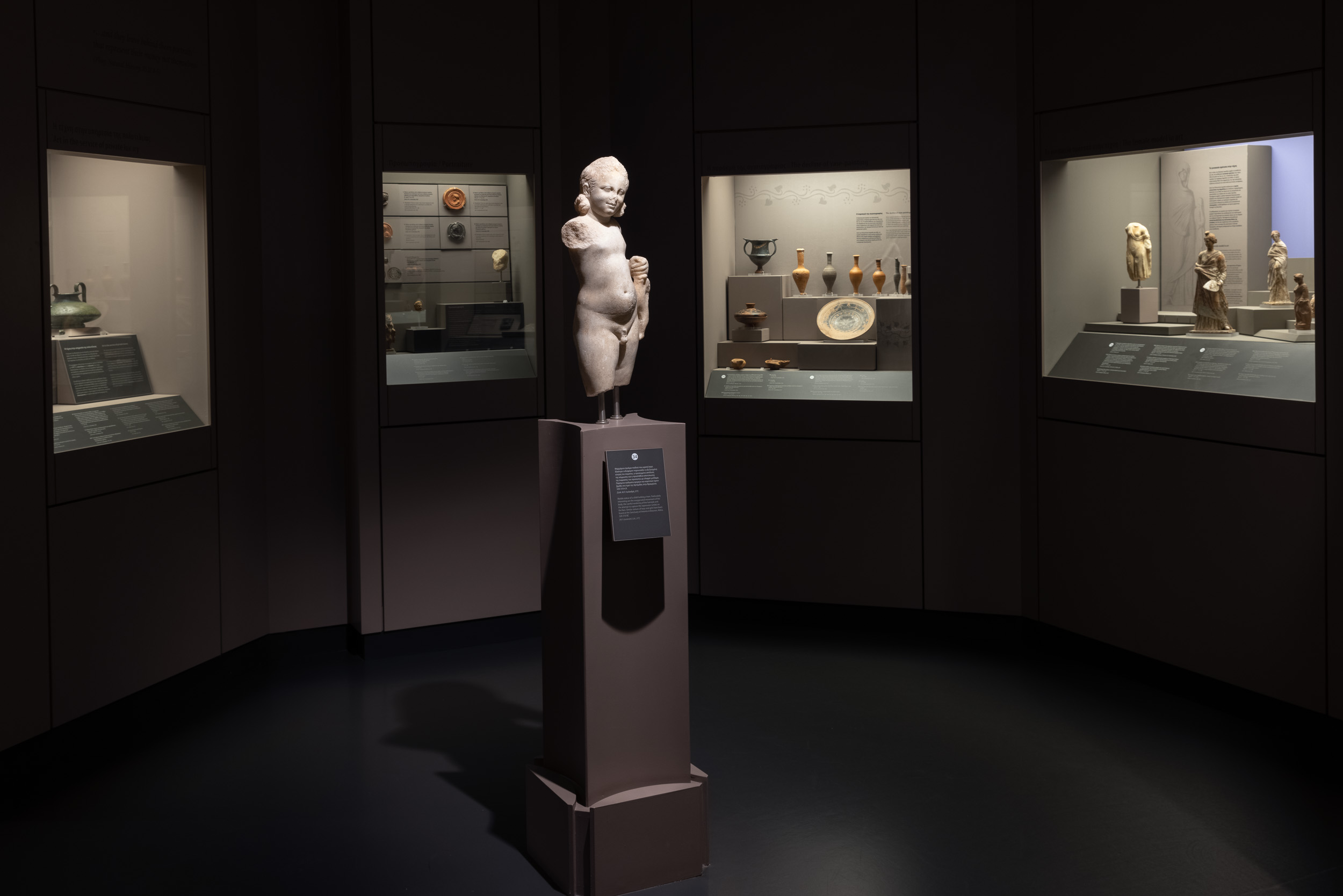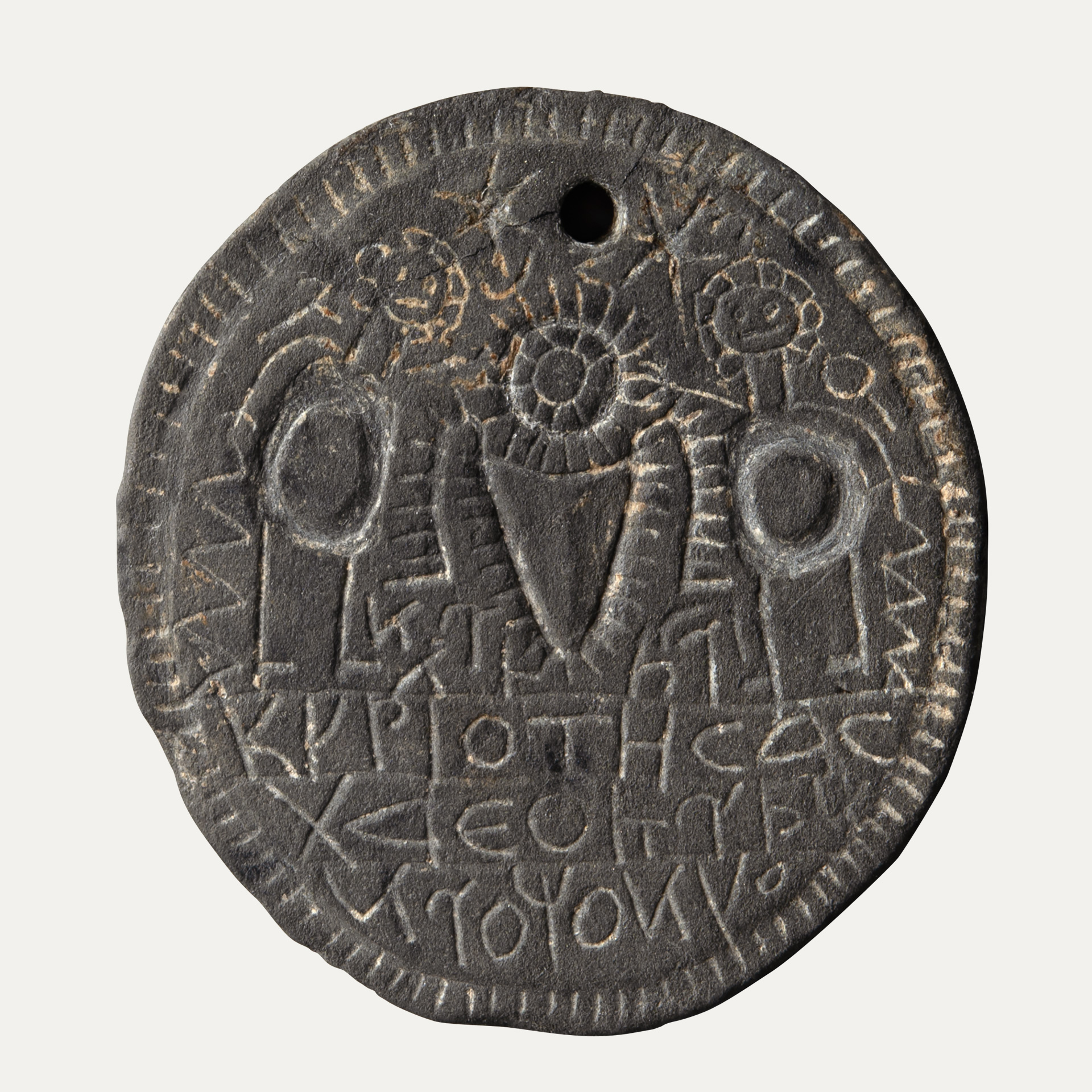From the “Dark Ages” to the Roman emperors
ANCIENT GREEK ART
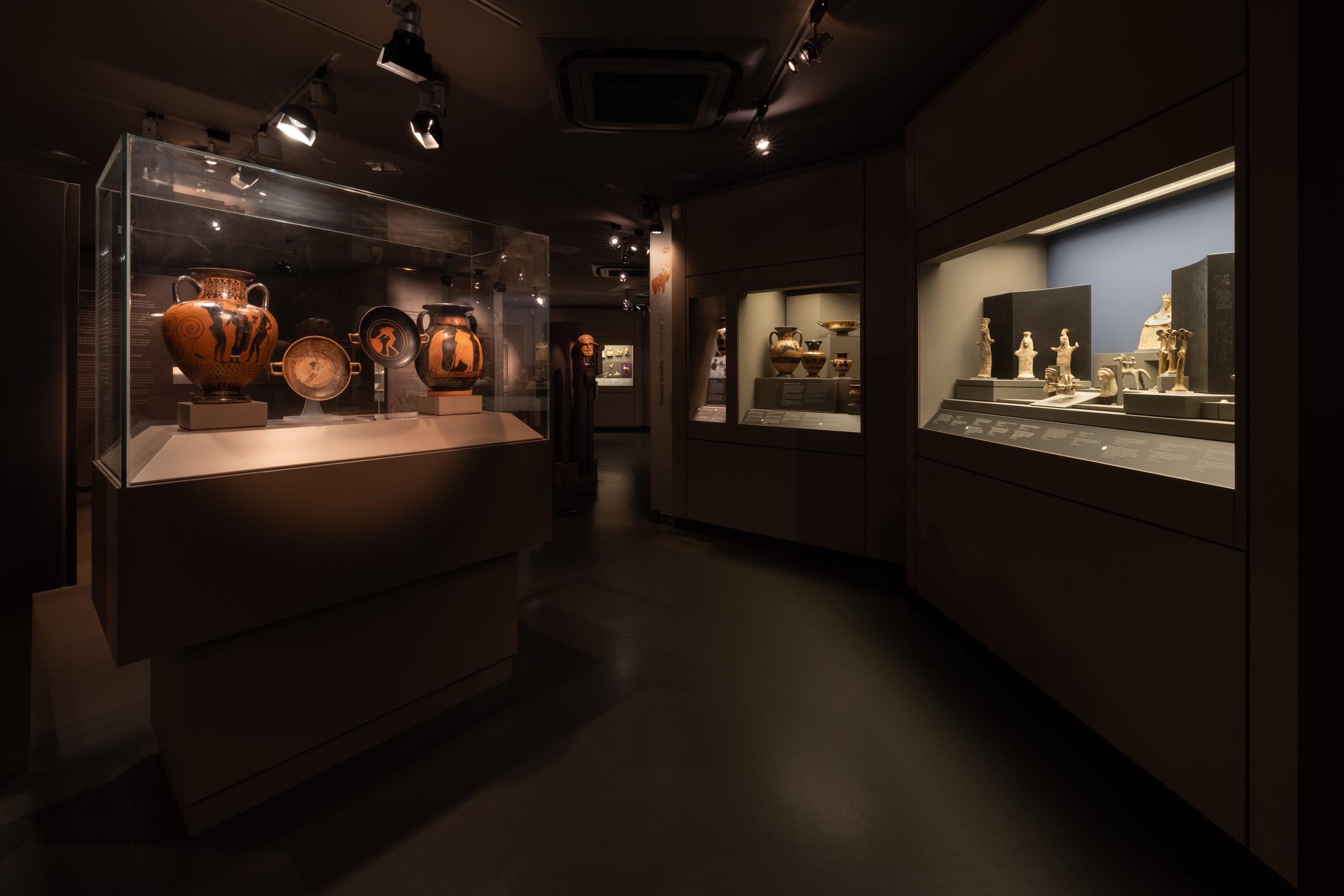
DARK AGES/ PROTOGEOMETRIC PERIOD (1025 – 900 BC)
The collapse of the Mycenaean palatial system ushered in an era of instability and change in the Aegean region. Many skills were seemingly lost, including writing, painting, stone-carving, and monumental architecture, while radical transformations occurred in burial customs with the appearance of cremation. According to archaeological finds and literary evidence, population migrations took place in the early centuries of this period, including the famed “Dorian Invasion” to central Greece and the Peloponnese. Changes in how warfare was conducted undoubtedly played a role in these developments, especially with the manufacture of iron weapons.
Although recent research has begun to overturn the impression of the so-called “Dark Ages,” the general picture of the period, particularly the 11th and part of the 10th c. BC, is one of poverty, minimal trading contacts, and artistic expression limited to the strictly geometric decoration of vases, figurine modelling in clay and cast bronze, and little gold jewellery. Nonetheless, it is in precisely this period that developments of foundational importance for Greek history took place, such as the consolidation of the population in the Aegean region, the Ionian colonisation of the islands and the coasts of Asia Minor, the appearance of the political formation of the polis (city), and the founding of the first major religious sanctuaries.
GEOMETRIC PERIOD (900 – 700 BC)
From the 9th c. BC onwards, living conditions started to improve, and so the population steadily increased. Art developed at a more rapid pace, and the old sea routes began to be used again. Euboeans and Cycladic islanders led the way, followed by Athenians, Argives, Rhodians, and Corinthians, engaging in trade in the Aegean region and Cyprus. At the same time, Cypriot and Phoenician merchants transported their products to Aegean harbours and Crete. These contacts led to the adoption of the Phoenician alphabet in Greece, likely around 800 BC, since the earliest inscriptions in the Greek alphabetic script date from around 780 – 770 BC. Not long after, possibly in the early 7th c. BC, the Homeric epics – which up to that point were maintained exclusively through oral tradition – were written down for the first time.
Two events of major historical importance took place in the opening decades of the 8th century BC. The first was the beginning of the colonisation of the West (Pithekoussai, Central and South Italy, Sicily), which was destined to broaden the horizons of the Hellenic world beyond the Aegean boundaries. The second was the inauguration of the Olympic Games in 776 BC, which signaled the evolution of the major sanctuaries (Olympia, Delphi, etc.) into religious and political centres of great Panhellenic importance.
ARCHAIC PERIOD (700 – 490/480 BC)
The Archaic period is the period during which the concept of the city-state crystallized and the social hierarchy within it was radically transformed. Already from the 7th c. BC, the appearance of the hoplite phalanx – the coordinated corps of foot soldiers who fought in battle lines – challenged one of the nobilities’ exclusive privileges (and sources of authority): the conduction of warfare. Moreover, the rapid growth of trade – particularly after the appearance of coinage around 600 BC – and ongoing colonisation, which brought the Greek cities initially into creative contact and subsequently into conflict with other Mediterranean powers (the Etruscans and the Carthaginians in the West, the Phoenicians and the Persians in the East), further shook the aristocratic structures of society. These developments prompted the large-scale legislative reforms of the period (of Lykourgos in Sparta, of Drakon and Solon in Athens, etc.), designed to balance the opposing forces and to grant political rights to a broader social demographic.
The transition to this new political reality was not always smooth and was, in many cases, met with the forceful opposition of the aristocratic class. This frequently manifested in the establishment of tyrannies during the 7th and 6th centuries BC. In 510 BC, the overthrow of one such regime in Athens prompted the reforms of Kleisthenes, who removed political power from the jurisdiction of the nobles and conceded it to elected bodies and the “deme,” thus opening the way for the famous Athenian Democracy of the 5th c. BC.
Greekness
Notwithstanding rivalries, the common language, religion, and traditions of the Greek city-states created a sense of shared identity, which was reinforced by the Panhellenic religious festivals and games. This sense of Hellenic identity was cemented during the Persian Wars (490 – 480/79 BC) when the Greek cities joined forces in order to confront the threatening “barbarian” invasion.
Another consequence of these wars, which marked the end of the Archaic period, was the demonstration of the perceived superiority of Greek political liberty over eastern despotism, opening the way to a period of intense political activity and unmatched cultural achievements.
CLASSICAL PERIOD (490/480 – 323 BC)
The Persian Wars brought forth a new political and military power in the Aegean, destined to place its seal on the entirety of the 5th c. BC. Athens, exploiting the Panhellenic prestige it had acquired in the struggle against the Persians, assumed a dominant role in the Delian League, the maritime coalition founded in 477 BC to continue martial operations against the Persians.
At first, Athens was primus inter pares (first among equals) among the allies. But in 454 BC, when the League’s treasury was transferred from Delos to Athens, the old coalition began to take on the form of Athenian supremacy. Henceforth, Athens had free rein in managing the League’s income and imposing political will on the allies, and often exercised brute force in doing so.
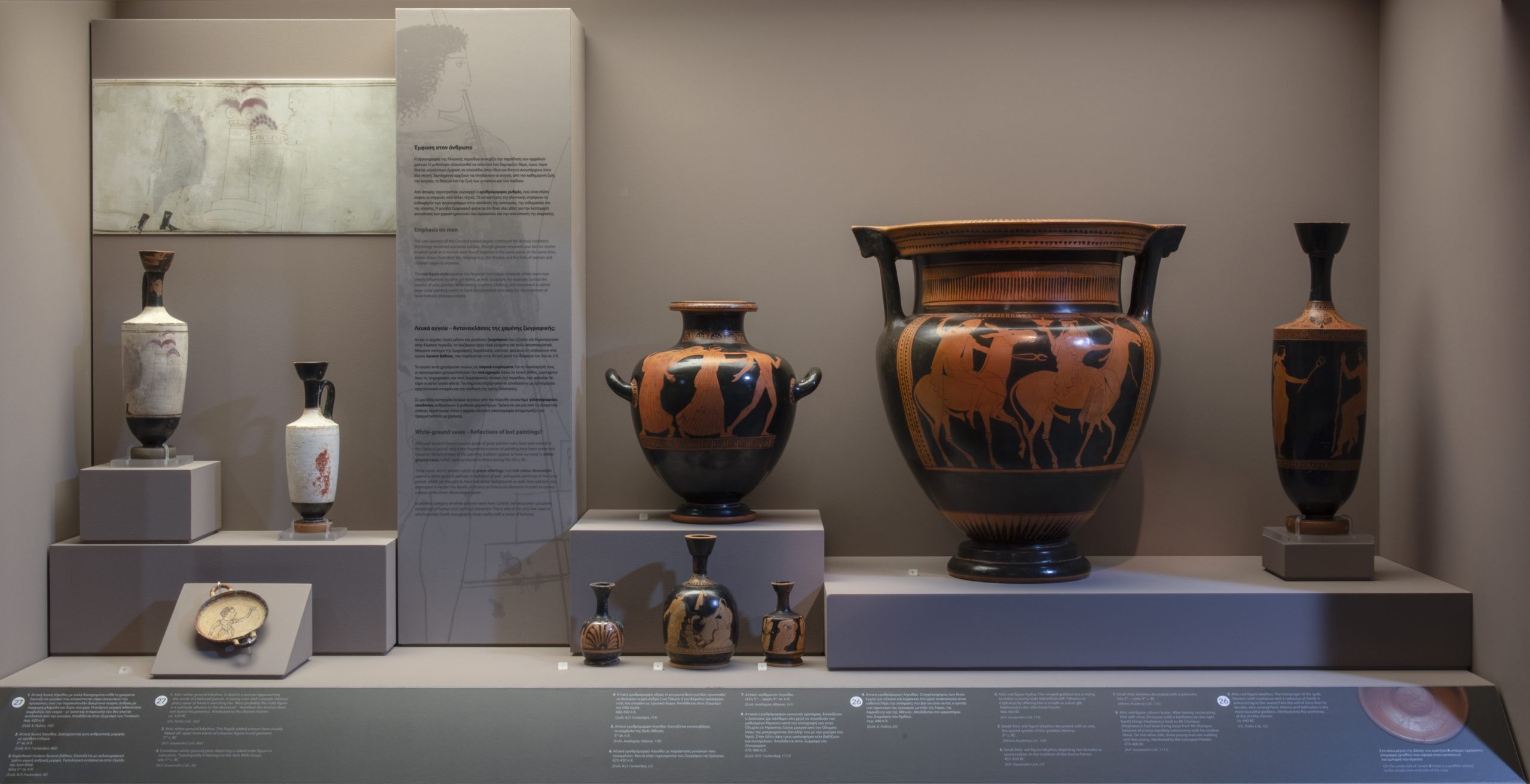
The peak of art in democratic Athens
The wealth that Athens accrued from the appropriation of the League treasury, the exploitation of the new lodes of silver discovered in the mines at Lavrion in 483 BC, the development of an unofficial peace with the Persians in 449 BC, and the consolidation of the democratic regime all contributed to an unprecedented flowering of the arts, literature, and philosophy, which left their permanent marks on the history of western civilisation. Sculpture, painting, and tragic poetry attained unsurpassed levels of maturity and creativity.
In architecture, the building programme of Pericles produced some of the most impressive temples of Antiquity, the greatest of which was the Parthenon. In philosophy, the freedom of thought and action fostered by Democracy led to the discussion of advanced political theories, initially by the Sophist movement and later by Plato and Aristotle.
The Peloponnesian War and its consequences
It was inevitable that Athens’ enormous political influence and its control of trade with both the Eastern and the Western Mediterranean would provoke a reaction from the other great power of the period, Sparta. After failed attempts to challenge the Athenian hegemony in the 450s and 440s BC, the Spartans declared war on Athens in 431 BC. This civil conflict, known as the Peloponnesian War, ended in 404 BC, with the Spartans as the victors.
The Democratic regime survived, but Athens lost much of its power. In this new order, the victorious Sparta appeared on the political stage with demands alongside other leading city-states, such as Corinth and Thebes. As such, the first half of the 4th c. BC was a time of ongoing power struggles between these cities, especially concerning hostilities over territory.
The rise of the Macedonians
Meanwhile, a new military power was emerging in Macedonia – a distant province of the Hellenic world until then – with archaic political structures based on monarchy. Philip II ascended the throne in 359 BC, and within one decade of military campaigns (348 – 338 BC) he succeeded in gaining control over the whole of mainland Greece, ending the centuries-long independence of the Greek city-states.
His son Alexander continued his work but turned his attention to Persia. Following his ascension to power in 336 BC, until his death in 323 BC, Alexander managed to create a vast empire with inexhaustible natural resources, stretching from the Mediterranean Sea to what is now Afghanistan. These conquests were destined to change the history of the ancient world drastically.
HELLENISTIC PERIOD (323 – 31 BC)
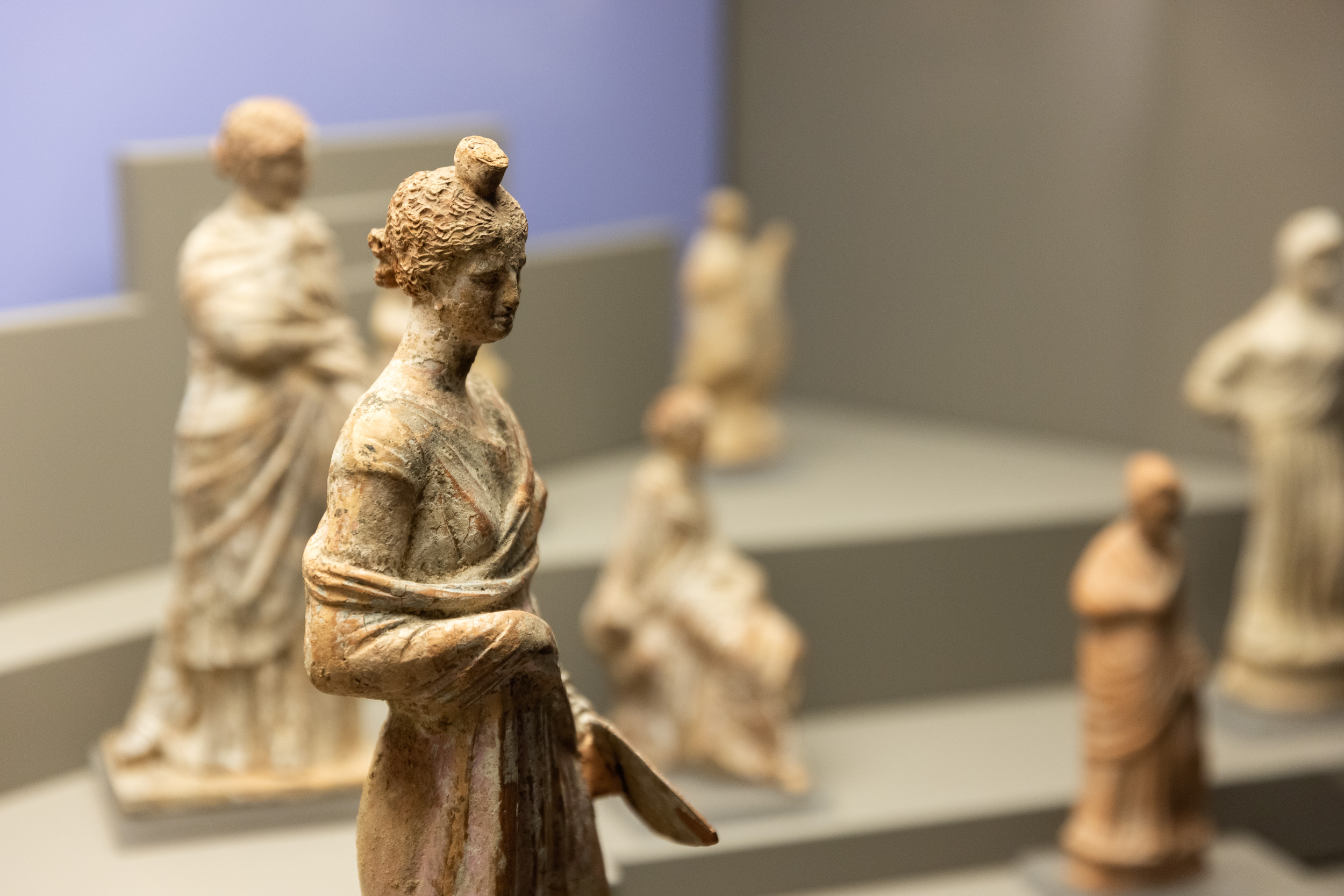
The conquests of Alexander the Great had tremendous historical consequences. Apart from disseminating Greek culture as far as the western fringes of the Indian subcontinent, they also radically transformed political structures, not only in the Aegean but also in the entire Eastern Mediterranean basin. After Alexander’s death, the vast empire was split into four large kingdoms: Egypt under the dynasty of the Ptolemies, Syria under the Seleucids, Asia Minor under the Attalids, and Macedonia under the Antigonids.
The prevalence of the institution of monarchy marked the end of the traditional city-state structure and shifted the axis of historical development beyond the Aegean region, thus laying the foundations for the subsequent unification of the Mediterranean world. In the religious sphere, there was a strong tendency toward syncretism (the merging of various belief systems), with the spread of Eastern cults to the West and of Greek ones to the East; at the same time, monotheistic beliefs began to gain ground throughout the Hellenistic world.
The predominance of the Romans
Nonetheless, countless political and military conflicts led to the gradual weakening of the Hellenistic kingdoms (mainly Syria and Egypt), thus allowing Rome – which had already won total control of the western Mediterranean by the early second century BC – to lay serious claims over the eastern world as well. In 148 BC, Macedonia was declared a Roman province, and then, in 146 BC, the Roman army sacked Corinth. In 133 BC, Attalos III gave the kingdom of Pergamon to Rome as a separate province.
In 86 BC, the Roman general Sulla captured and destroyed Athens, which had rebelled against the Romans during the First Mithridatic War. The Romans finally prevailed in 31 BC, with Octavian’s victory in the naval battle of Actium and the annexation of Egypt, which marked the birth of the Roman Empire.
ROMAN PERIOD (32 BC – 324 AD)
With Octavian having been declared Emperor Augustus in 27 BC, a new era dawned in which the East and West were to coexist under a single and unifying administrative authority for the first time in history. Due to the secure conditions guaranteed by the Pax Romana, the first two centuries of the Roman Empire were a period of prosperity, flourishing trade, and fertile cultural interaction for the entire Mediterranean world.
Because of its rich past, Greece was an influential cultural touchstone for the Roman civilisation, even though, at a political level, it was far from the empire’s decision-making centres, having been split into provinces. Public works were undertaken in many Greek cities to improve urban infrastructure (streets, bridges, aqueducts, bathhouses, theatres, odeums), and the sanctuaries were enriched with magnificent monuments and structures. Some of the most important monuments in Greece, whether in places of worship or in settlements, were erected during the reigns of the emperors Tiberius, Trajan, and Hadrian or with the financial support of the wealthy magnate Herodes Atticus.
The decline of the Roman Empire
The 3rd c. AD witnessed the beginning of the Roman Empire’s destabilisation due to the pressure of domestic problems (demographic, social, and economic) and external threats on its northern and eastern frontiers.
The gradual spread of Christianity contributed to this situation, especially in the eastern provinces and Greece, where Christian communities began to spring up immediately after Paul the Apostle’s journeys through the land between 49 and 56 AD. The Christian uprisings, which were originally socially and ethnically motivated, affected even the capital of Rome, provoking merciless persecutions in the time of Nero and also later in the reigns of Decius and Diocletian.
THE PREDOMINANCE OF CHRISTIANITY
In the early 4th c. AD, these developments led Emperor Constantine to make two significant decisions: first, to recognize the Christian religion in 313 AD officially, and second, to transfer the capital of the empire to the site of the ancient Megarian colony of Byzantion, on the shores of the Bosporus, in 330 AD.
The founding of Constantinople (as the new capital was named) raised the curtain on a new age in which the Graeco-Roman past was merged with the Christian present. In 393/4 AD, Emperor Theodosius issued a decree prohibiting pagan cults, which brought about the final abandonment of the ancient sanctuaries. After the emperor’s death in 395 AD, the Roman Empire was split into eastern and western parts, an event that was to play a significant role in the history of Europe to follow.
The western part of the empire collapsed in 476 AD under the assault of the Vandals, while the eastern half continued to expand until the 6th c. AD when it reached its maximum extent in the reign of Justinian. The Byzantine emperor’s decision in 529 AD to close down the philosophical schools in Athens was the move that finally put an end to any cultural ties with Classical Antiquity.
